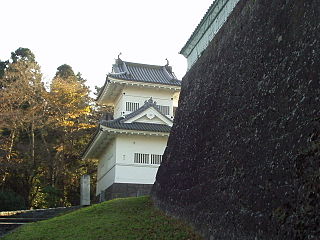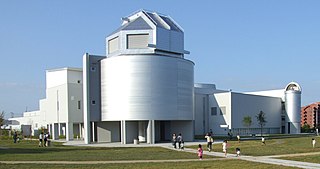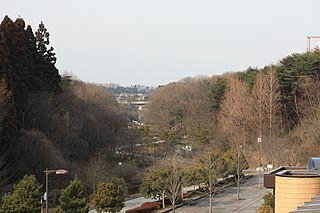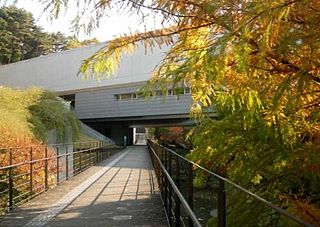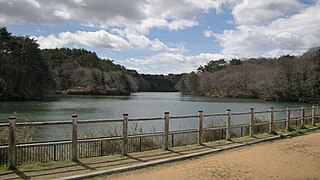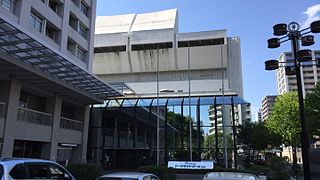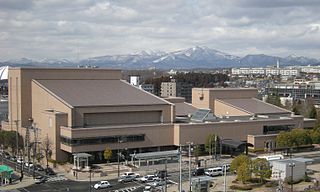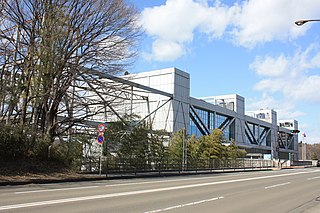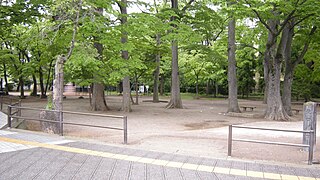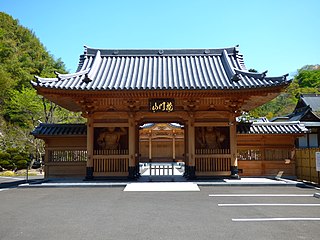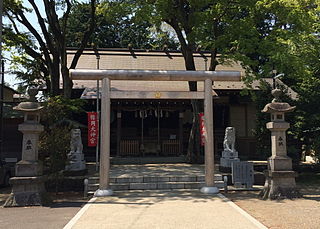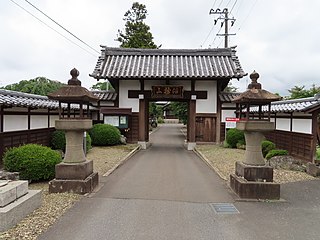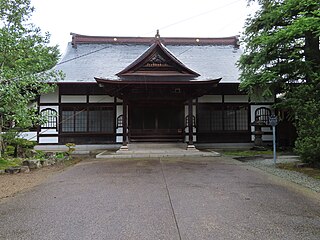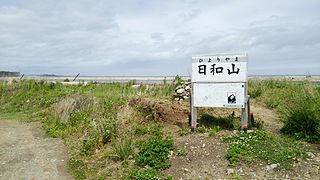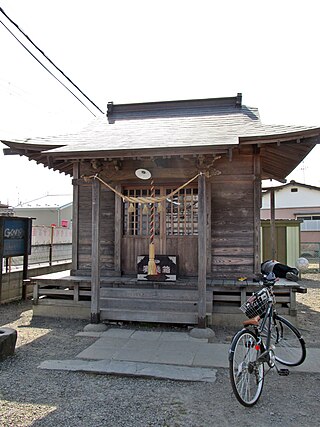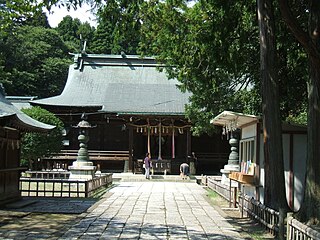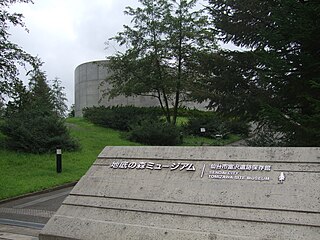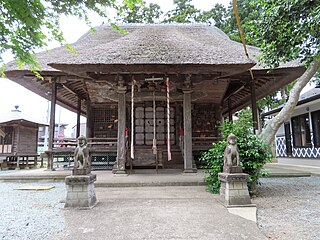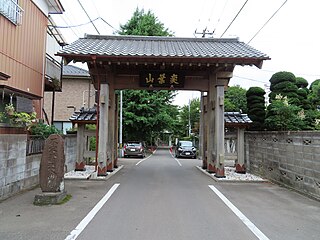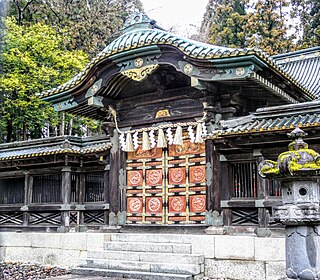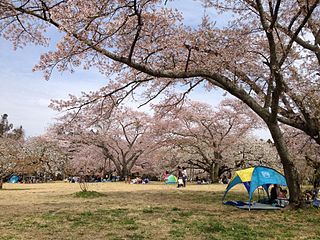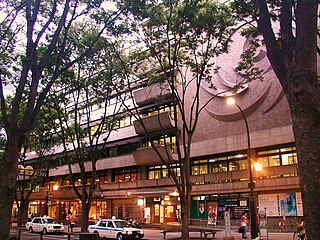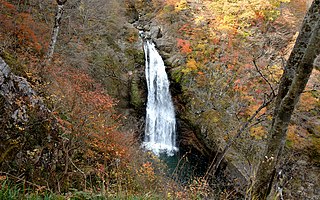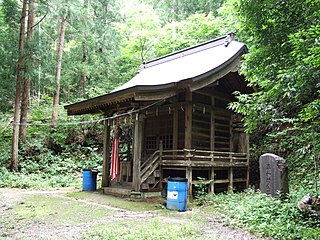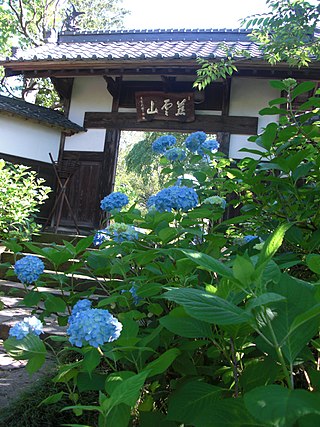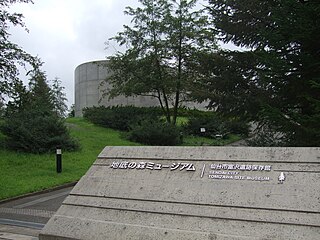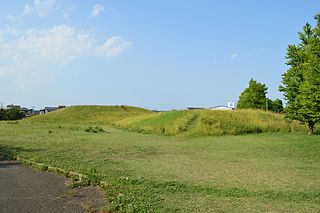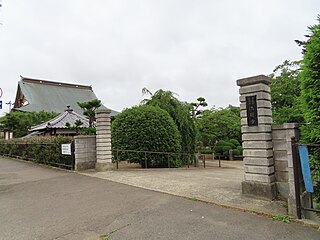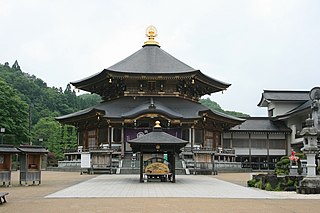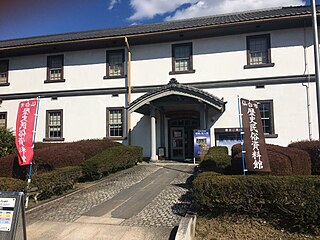48 Sights in Sendai, Japan (with Map and Images)
Legend
Premium Sights
Book tickets, guided tours and activities in Sendai.
Guided Free Walking Tours
Book free guided walking tours in Sendai.
Welcome to your journey through the most beautiful sights in Sendai, Japan! Whether you want to discover the city's historical treasures or experience its modern highlights, you'll find everything your heart desires here. Be inspired by our selection and plan your unforgettable adventure in Sendai. Dive into the diversity of this fascinating city and discover everything it has to offer.
Sightseeing Tours in SendaiActivities in SendaiAoba Castle is a Japanese castle located in Sendai, Miyagi Prefecture, Japan. Throughout the Edo period, Aoba Castle was home to the Date clan, daimyō of Sendai Domain. The castle was also known as Sendai-jō (仙台城) or as Gojō-rō (五城楼). In 2003, the castle ruins were designated a National Historic Site.
2. Yagiyama Zoological Park
Sendai City Yagiyama Zoological Park is a zoo in Sendai City, Miyagi Prefecture, Japan. The park opened in 1965 (Showa 40). It is located on Mt. Yagi, overlooking the center of Sendai City. Across the street from the park is the amusement park Yagiyama Benny Land, and to Aobayama, where the Sendai Castle ruins are located, it is just across the Yagiyama Bridge. As of 2018 (Heisei 30), the number of captive animals is 581 items of 130 species.
3. Sendai Astromical Observatory
The Sendai City Observatory is an astronomical observatory located in Nishikigaoka, Aoba-ku, Sendai, Miyagi Prefecture, Japan. It was opened as the Sendai Observatory in 1955 (Showa 30), and was donated to Sendai City in 1956 (Showa 31) and became the Sendai City Observatory. It moved to its current location in 2008. In the spring of 2023, the renewal of the planetarium will be completed.
4. Ruins of the Great East Japan Earthquake Sendai Arahama Elementary School
Sendai City Arahama Elementary School was a public elementary school located in Wakabayashi Ward, Sendai City, Miyagi Prefecture from 1873 to 2016. The school building was damaged by the Great East Japan Earthquake in 2011. It has been open to the public since May 2017 as a remnant of the earthquake.
5. Dainohara Forest Park
Taihara Forest Park is a forest park located in Aoba-ku, Sendai, Miyagi Prefecture, Japan. It was developed as part of the Meiji 100th anniversary commemorative project and opened in April 1973 (Showa 48). It is located in the Shichikita Hills, and the canyon created by a tributary of the Shichikita River and the surrounding forest are left in the park.
6. Sendai Literature Museum
Sendai Literature Museum is a literary museum and social education facility in Sendai City, located in Kitane, Aoba-ku, Sendai City, Miyagi Prefecture. It is adjacent to the west side of Taiyuan Forest Park and is also one of the entrances and exits of the park.
7. Mizunomori Park
Mizunomori Park is a park that straddles Aoba Ward and Izumi Ward in Sendai City, Miyagi Prefecture. Most of the ponds and marshes are the two ponds and marshes of the Marutazawa Embankment and the Sankyo Embankment, which were built on the tributaries of the Shichikita River, and the forests surrounding them, but there are also recreational facilities such as heated pools and campgrounds near each entrance of the park.
8. トークネットホール仙台
Sendai Civic Hall is a complex of concert halls, conference rooms, and exhibition rooms located in Sakuragaoka Park (Nishi Park), Aoba-ku, Sendai City, Miyagi Prefecture. It is abbreviated as "Civic Hall" by the citizens.
9. Sendai Ginko Hall Izumity21
The Sendai City Izumi Cultural and Creative Center is a cultural complex located in Izumi-ku, Sendai, Miyagi Prefecture. It is commonly known as "Izmiti 21" (Izmiti ni Juichi). It is generally referred to by its common name.
10. スリーエム仙台市科学館
Sendai City Science Museum is a science museum located in Aoba-ku, Sendai, Miyagi Prefecture, Japan. It is located in Taiyuan Forest Park. Opened in 1952 (Showa 27), Sendai City's science education facility "Science Room" was the predecessor, and in 1968 (Showa 43), it was opened as the Sendai City Science Museum.
11. 陸奥国分寺薬師堂
Mutsu Kokubun-ji (陸奥国分寺) is a Buddhist temple in Wakabayashi-ku, Sendai, Japan, belonging to the Shingon-shū Chizan-ha sect, and is the provincial temple ("kokubunji") of former Mutsu Province. The grounds of the temple are a National Historic Site. and one of its structures, the early Edo period Yakushi-dō (薬師堂) is an Important Cultural Property.
12. Nobody knows Theater
Sendai Central Hall (Sendai Central Hall) is a movie theater that was once located in Chuo 2-chome, Aoba-ku, Sendai City, Miyagi Prefecture. It was also used as a venue for live performances and vaudeville.
13. 仙岳院
Sengakuin is a temple in Toshogu, Aoba-ku, Sendai City, Miyagi Prefecture, and is a temple at the head of the Tendai sect and Kankokuji Temple, which was founded by Date Tadamune, the second lord of Sendai Domain. Sendai Toshogu Shrine and Hiraizumi and Chusonji Temple. Due to the history of its founding, the official name is thought to be Sengaku-in, but since the Edo period, Kangkoku-ji has been called Sengaku-in.
14. Katsuyama Park
Katsuyama Park is a city park located in Uesugi, Aoba-ku, Sendai, Miyagi Prefecture, Japan. It faces the intersection of Atago Uesugi-dori and Kita-4-chome-dori, and signposts of "Uesugi-dori" and "Kita-4-chome" are installed to commemorate the 88th anniversary of the city's incorporation. The garden of a former merchant house has been turned into a park, and the large zelkova, maple, cedar, and cherry trees in the park convey the remnants of the garden to this day. There was also a time when there was originally a pond in the park. The pond was filled in when Uesugiyama-dori was expanded, and there is no trace of it. The name of Katsuyama Park is derived from Katsuyama Sake Brewery.
15. 洞雲寺
Dounji Temple is a temple of the Soto sect located in Izumi Ward, Sendai City, Miyagi Prefecture. The name of the mountain is Longmen Mountain. The main Buddha is Buddha. It is also called Sunayama Temple.
16. 仙台市戦災復興記念館
The Sendai City War Damage Reconstruction Memorial Hall is a public facility located in Omachi, Aoba-ku, Sendai, Miyagi Prefecture. It is located along Hajimachi-dori near the intersection of Hirose-dori and Yasui-dori. It was built to commemorate the recovery from the Sendai air raid.
17. 桜岡大神宮
Sakuraoka Daijingu Shrine is a shrine located in Nishi Park in Aoba-ku, Sendai, Miyagi Prefecture. The former company name was a prefectural company. The area around the company is known as one of the most famous cherry blossom spots in Sendai City.
18. Mt. Taihaku
Mount Taihaku (太白山, Taihakusan) is a mountain located in Moiwa, Taihaku-ku, Sendai, Miyagi Prefecture, Japan. The altitude of the third-magnitude triangular point "Ide Forest" at the top of the mountain is 320.61 meters (April 1, 2014). The name of Taebaek-gu is derived from the name of this mountain. It is also called Sendai Fuji or Natori Fuji.
19. 満福寺
Manpukuji Temple is a Buddhist temple of the Chizan sect of Shingon Buddhism located in Aramachi, Wakabayashi-ku, Sendai, Miyagi Prefecture. It is located in the eastern part of the Aramachi shopping district. It is built on the border between the castle town of Sendai Castle and the castle town of Wakabayashi Castle in the early Edo period.
20. 熊野新宮社
Kumano Shrine is a shrine located in Natori City, Miyagi Prefecture. One of the three companies in Natori Kumano. Formerly known as Kumano Shingusha. The former company name was a prefectural company.
21. 仏眼寺
Butsugenji is a Nichiren Shōshū temple located in Wakabayashi-ku, Sendai, Miyagi Prefecture. The name of the mountain is Horyuzan. Many of the Nedan families have ancestors from merchants and samurai from the Edo period.
22. 東昌寺
Toshoji Temple is a temple of the Rinzai sect of the Tofukuji sect located in Aoba-cho, Aoba-ku, Sendai, Miyagi Prefecture. One of the five Zen temple Kitayama mountains lined up in Sendai's Kitayama. The name of the mountain is Mt. Muwei. The main Buddha is Buddha.
23. 大年寺

Dainenji is a Obaku sect temple located in Monzencho, Taihaku Ward, Sendai City, Miyagi Prefecture. The mountain name is Ryozanzan. The founder is Tetsugyu Po. The main deity is Shakyamuni Buddha. Its rank is 6.
24. 日和山
Mount Hiyori, located in Sendai, Miyagi Prefecture, is Japan's lowest mountain. From 1991 to 1996, and again on April 9, 2014, after the Tohoku tsunami, the Geospatial Information Authority of Japan recognized it as "the lowest mountain in Japan".
25. Namiwake Jinja
Namiwa Shrine is a shrine located in Wakabayashi Ward, Sendai, Miyagi Prefecture, Japan. The former company name is Murasha. It is attracting attention as a shrine that conveys the large earthquakes and tsunamis that occurred on the Pacific side of the Tohoku region in the past.
26. 鎌倉山
Mount Kamakura is a mountain located in Sakunami, Aoba-ku, Sendai, Miyagi Prefecture. 520.0 meters above sea level. It is located in the mountainous area east of the Ou Mountains. Depending on the angle, it looks like the profile of a gorilla, so it is commonly called Gorilla Mountain.
27. 青葉神社
Aoba Shrine is the memorial shrine of Date Masamune, located in Aoba-ku, Sendai, Miyagi Prefecture, Japan, near the site of the former Aoba Castle. The shrine was built in 1873 by petition of former retainers of the Date clan of former Sendai Domain to enshrine the deified spirit (kami) of Date Masamune under the name of Takefuruhiko-no-mikoto. This was in accordance with a practice which began in the Bakumatsu period and continued into the early Meiji period of establishing a shrine to the founders of the daimyō clan which ruled each feudal domain under the Tokugawa shogunate. Under the State Shinto ranking system, the shrine was designated as a prefectural shrine.
28. Sendai City Tomizawa Site Museum
The Sendai City Tomizawa Site Museum is an archaeology museum in the city of Sendai in northern Japan that preserves a fossilized forest, where the remains of human habitation that occurred 20,000 years ago were discovered during surveying work in 1988. The museum opened in 1996.
29. 真福寺
Shinpukuji Temple is a Buddhist temple of Tokimune located in Togashi, Wakabayashi-ku, Sendai, Miyagi Prefecture. It is called Hirosawa Mountain Mukuin. It is located on the left bank of the Hirose River. It was built in the 13th century in Tome County in Kasai territory, and moved to Mt. Iwade and then to Sendai under the rule of the Date clan. It is one of the two Tokimune temples in Sendai.
30. 落合観音堂
Ochiai Kannon-do is a Buddhist hall located in Shiromaru Ochiai, Taihaku Ward, Sendai City, Miyagi Prefecture. The temple was originally the head temple of the Shugendo Muishizan Ochiai-ji (initially Daizen-in). It currently belongs to Kōsai-ji, a temple of the Shingon sect Chisan school, located in Shiromaru Watari, Taihaku Ward.
31. 昌伝庵
Shoden-an is a temple of the Soto sect located in Aramachi, Wakabayashi-ku, Sendai City, Miyagi Prefecture. In some cases, a new script is used to write "Changden-an". The name of the mountain is Mt. Ekiyozan.
32. 仙台東照宮
Sendai Tōshōgū (仙台東照宮) is the memorial shrine of Tokugawa Ieyasu in Sendai, Miyagi Prefecture, Japan. Five of its buildings, all dating to 1654, have been designated Important Cultural Properties. The torii and gates were damaged in the 2011 Tōhoku earthquake and tsunami.
33. 三神峯公園
Mikamine Park is a scenic park located on a low mountain called Mikamine in Taihaku Ward, Sendai City, Miyagi Prefecture. It is known as a famous place for cherry blossoms in the southern part of Sendai City.
34. Manganji Temple
Manganji Temple is a Tendai temple located in Honmachi, Aoba-ku, Sendai City, Miyagi Prefecture (the location in the "General Directory of Japan Temples" is Motojikoji, formerly Natori-cho-ku). The grade is 7th class. The main Buddha is said to be the guardian Buddha of the Empress of Kōmyō in Saint Kannon. The name of the mountain is Mt. Chengdu. It is the 9th shrine of the 33 Kannon Shrine in Sendai.
35. 東京エレクトロンホール宮城
Miyagi Prefectural Auditorium (宮城県民会館) is a 1,590-seat multi-purpose hall located in Sendai, Japan. It opened in 1964 and has hosted artists such as Cheap Trick, Whitesnake and Mötley Crüe. After the sale of the naming rights, Tokyo Electron Hall Miyagi became, on April 1, 2008, the preferred nickname for Miyagi Prefectural Auditorium.
36. Akiu Great Falls
Akiu Great Falls is a waterfall located in Taihaku-ku, Sendai, Miyagi Prefecture, Japan. It is a nationally designated Place of Scenic Beauty. It is one of "Japan’s Top 100 Waterfalls", in a listing published by the Japanese Ministry of the Environment in 1990.
37. 中本誠司現代美術館
The Seiji Nakamoto Museum of Contemporary Art is a personal art museum of artist Seiji Nakamoto located in Higashikatsuyama 2-chome, Aoba-ku, Sendai, Miyagi Prefecture. The works of Seiji Nakamoto will be collected and exhibited.
38. 鹽流神社
Enryūjinja is a Shinto shrine located in Kumagane, Aoba-ku, Sendai, Miyagi Prefecture, Japan. In the Edo period, it was the shrine of Kumagane Village, and became a village shrine in the Meiji era. Officially, it is written as "Ryu Shrine".
39. 資福寺
Shifukuji is a temple of the Rinzai sect of Myoshinji sect located in Aoba-ku, Sendai, Miyagi Prefecture. It is one of the five Zen temple Kitayama mountains that line the northern mountains of Sendai.
40. Mt. Omoshiro
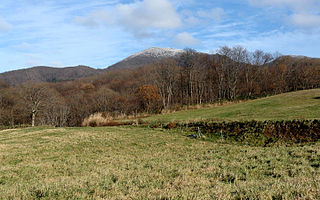
Mt. Fun is a volcano in the Ou Mountains on the border between Yamagata City, Yamagata Prefecture and Taihaku Ward, Sendai City, Miyagi Prefecture. The altitude is 1,264.4 m. Since the surface looks white when viewed from the Sendai side, it was named "Mt. Funfun".
41. Miyagi Gokoku Shrine
Miyagiken Gokoku Shrine is a Shinto shrine located in Sendai, Miyagi Prefecture, Japan. It enshrines the kami of "martyrs of the state" (国事殉難者) and its annual festivals take place on April 30, May 1, and October 23. It was established in 1904 and originally referred to as Shōkonsha (招魂社). Its current name dates to 1939.
42. Hosenji Temple
Hosenji Temple is a Buddhist temple of the Chizan sect of Shingon Buddhism located in Taihaku-ku, Sendai, Miyagi Prefecture, Japan. The honzon is Fudo Myo. In the precincts, there is the Enmei Jizo Hall, which has the legend of Osute Jizo, and the Eleven-sided Kannon Hall. Natori 33 Kannon Shrine No. 1 Shrine.
43. 富沢遺跡
The Tomizawa site is a complex archaeological site located in Nagamachi Minami 4-chome, Taihaku Ward, Sendai City, Miyagi Prefecture. Forests from about 20,000 years ago (Late Paleolithic period) and rice paddy remains from the Yayoi period have been discovered.
44. 遠見塚古墳
The Tōmizuka Kofun (遠見塚古墳) is a keyhole-shaped kofun burial mound located in the Wakabayashi ward of the city of Sendai, Miyagi in the Tōhoku region of northern Japan. It was constructed in the early to middle Kofun period, or around the late 4th to early 5th century AD, as the tomb of one or more of the gōzoku ruling the Miyagi Plain region. The site is a National Historic Site.
45. 福聚院
Fukujuin is a Soto Zen temple located in Taihaku Ward, Sendai City, Miyagi Prefecture. The mountain name is Nantan Mountain. The main deity is Kannon, the Bodhisattva of Compassion. It enshrines Hotei, one of the Seven Lucky Gods of Oshu Sendai.
46. 法運寺
Hounji Temple is a temple of Nichiren Buddhism located in Renbo, Wakabayashi-ku, Sendai, Miyagi Prefecture. The name of the mountain is Guangjun Mountain. The former main temple is Ono Honenji Temple, Konishi Hoen. There is also a temple in the vicinity.
47. Jogi Nyorai Saihoji Temple
Saihō-ji (西方寺) is a Buddhist temple built in 1706 belonging to the Jōdo-shū sect in Aoba-ku, Sendai, Miyagi Prefecture. It is rarely called by its formal name by locals, and is more often called Jogi Nyorai or Jogi-san.
48. Sendai City Museum of History and Folkore
Sendai City Museum of History and Folklore opened in Tsutsujigaoka Park, Sendai, Miyagi Prefecture, Japan in 1979. The museum building, the former barracks of the 4th Infantry Regiment, built in 1874 and extended in 1876, is the oldest surviving Western-style building in the prefecture and a Prefectural Tangible Cultural Property.
Wikipedia: Sendai City Museum of History and Folklore (EN), Website
Share
Disclaimer Please be aware of your surroundings and do not enter private property. We are not liable for any damages that occur during the tours.
